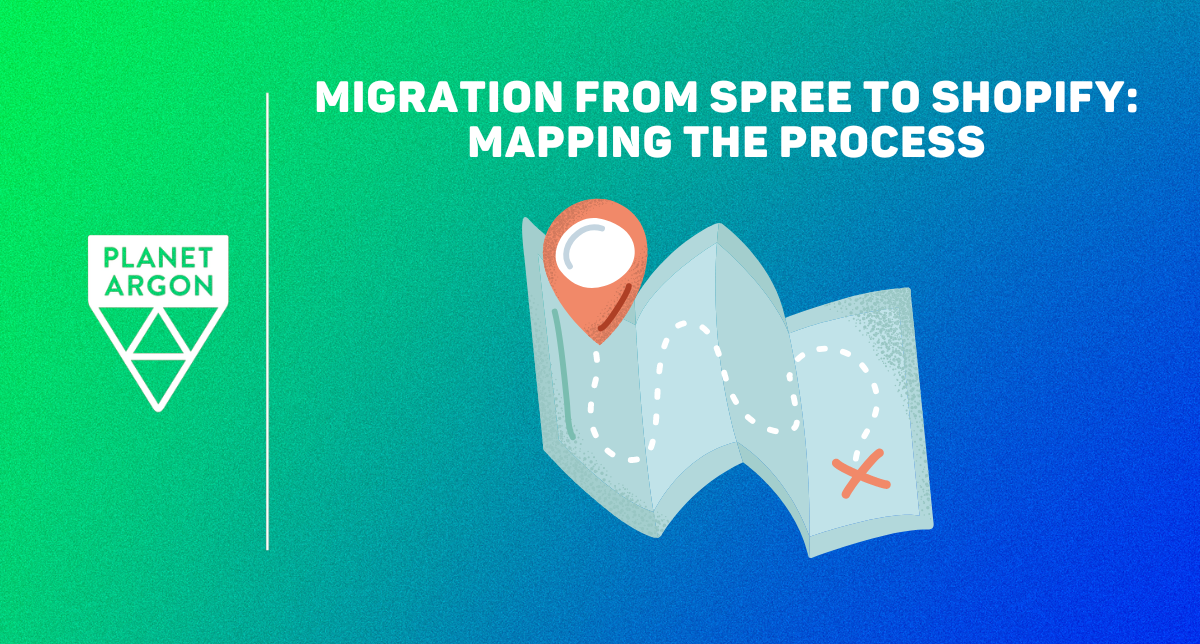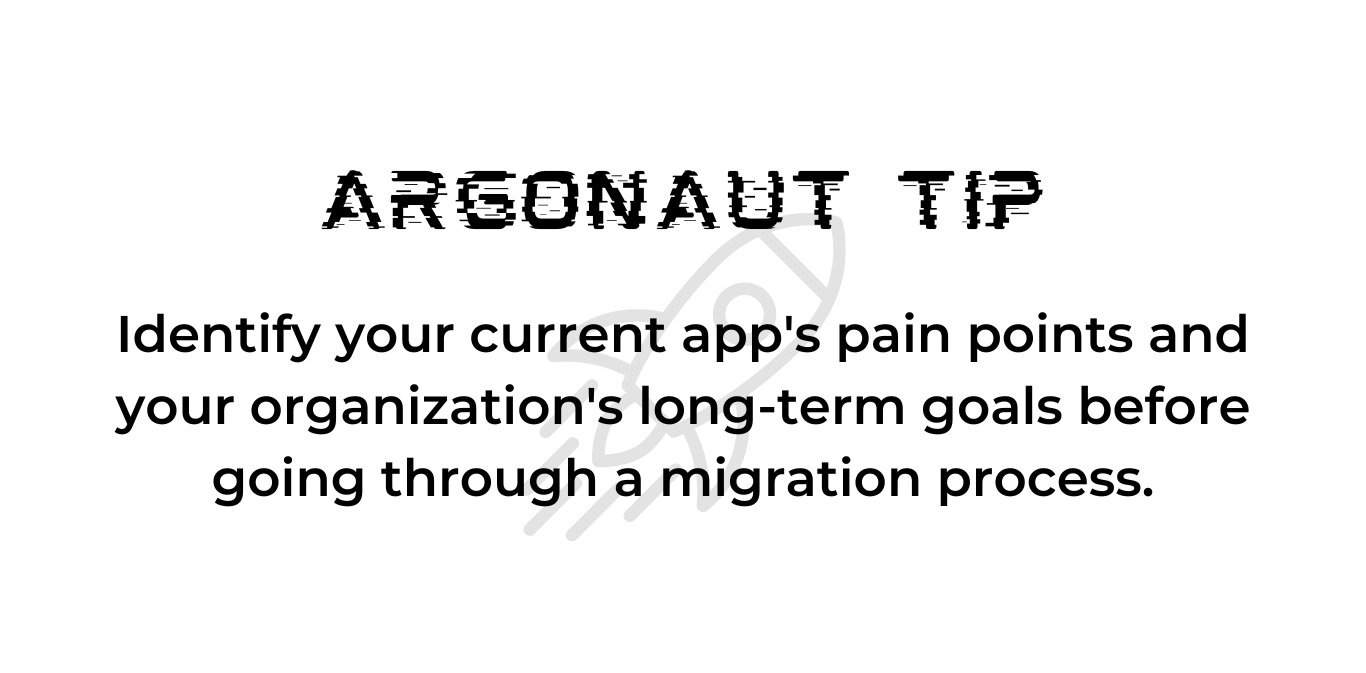
Running your Rails app on Spree Commerce is a solid option if you need room for flexibility and customization. But you might run into problems years down the road if your Rails versions are outdated or if the app is “too” customized and too complex to be managed by your dev team. If this is the case, as it has been for a few of our clients, you might be looking for a more user-friendly and scalable e-commerce platform.
Before making a big migration, there’s a lot to consider, but it doesn’t have to be a big scary thing.
Let’s explore some of the reasons why you might (or might not!) consider a migration from Spree to Shopify and how we work with clients to make the transition as smooth and seamless as possible.
Reasons to Migrate from Spree to Shopify
Migrating from Spree to Shopify can have several advantages, depending on your specific needs and goals. Here are some reasons why you might consider making the big move:
- Ease of use: Shopify is designed to be easy to use, even for users with limited technical expertise. The platform offers a user-friendly interface and intuitive features that make it easy to manage your online store.
- Scalability: Shopify is a highly scalable platform that can handle large volumes of traffic and transactions. You won't have to worry about outgrowing your platform as your business grows.
- Security: Shopify takes security seriously and offers a range of features to keep your data and your customers' data safe. The platform is PCI DSS compliant and offers SSL encryption as standard. Spree also has a strong security track record, for the most recent versions. If you are very behind on your Spree versions or have implemented many custom features, you will be out of the security support and community bubble.
- App ecosystem: Shopify has a thriving app ecosystem that offers a wide range of apps and integrations to extend the functionality of your store so you can easily add new features and capabilities as your business needs evolve.
Support: Shopify offers comprehensive support options, including 24/7 customer support, a detailed knowledge base, and a community forum. This means that you can get help and advice whenever you need it.
Reduced Services: Moving to a collected ecosystem, like Shopify, may greatly reduce the number of services that are required to run your eCommerce platform. Elements like payment gateways, site hosting, and CMS features are all in-box!
Shopify is built with Ruby on Rails! This means you can modify Shopify with custom features that you may already have in Spree, or build on top of the platform.

Reasons to Stick with Spree
Here are some reasons why you might choose to continue using Spree instead of migrating to Shopify:
- Flexibility and customization: Spree is highly customizable, offering flexibility when creating custom features and integrations. If you have unique or complex e-commerce requirements, Spree may be a better fit than Shopify.
- Open source: Spree is an open-source platform, meaning you can fully access the source code and modify it to suit your needs. This can be a significant advantage if you have in-house development expertise and want to customize the platform extensively.
- Lower costs: Because Spree is a free and open-source platform, no licensing fees or other costs are associated with using it. This can be a significant advantage for smaller organizations or those operating on a tight budget.
- Existing infrastructure: If you already have an established e-commerce infrastructure built on Spree, migrating to a new platform like Shopify can be time-consuming and expensive. Sticking with Spree may be a more practical option in this case.
- Community and support: Spree has a large and active community of developers and merchants, so many resources are available for help and advice. It may make sense to continue using the platform if you have existing relationships or partnerships within the Spree community.
Shopify Assessment
Still interested in migrating from Spree to Shopify? We can help you understand what the process entails, how long it may take, and how we approach this type of project.
How We Perform an Assessment
First, we do a quick overall evaluation of your application using a Work Spike, a fancy term to describe a program we use to explore potential solutions for a project. Next, we note some areas that work well, like having well-organized admin details or a simple and intuitive feature set. Then we may note some areas that caught our attention, like errors caused by outdated Ruby and Rails versions.
We compare the current Spree features with Shopify's out-of-the-box offerings to see which platform offers the best long-term benefits for your organization. We then have the exciting task of reading through the API and site migration documentation.
Share our Recommendations
Next, we share our findings with you and recommend the best path forward. Assuming a migration is still a top option, we’ll map out a high-level plan that could range from 2 to 3 months, depending on the size of your application. We may recommend starting with the data (products, orders, users) to build the front-end elements. Then we would discuss which current features are required, how to create them in Shopify, and new features to utilize.
Identify Risks
No migration exists without risks; recognizing these factors is an important part of the process. We have ways to manage risks, but they’re worth being aware of.
- Data: A big consideration when looking into a migration is the way that data is structured in Shopify, which has a few mandatory elements to make it easier for the different built-in features (and other apps) to be uniform. Some scrutiny is required in how data like order history, product information, and customer data are laid out.
- Downtime: A clear migration plan will be key to making the move from Spree to Shopify seamless for customers. If executed well, during a slow period, the transition should be pretty seamless.
- Integration issues: If you have existing integrations with third-party tools or services, these integrations may need to be reconfigured or rebuilt in the new platform. This could result in additional time and effort required to make the transition.
- Customization challenges: If you have customized your Spree store extensively, it may be challenging to recreate these customizations in Shopify. This could require additional development time and expense to achieve the same functionality in the new platform.
- Training and learning curve: If you and your team are accustomed to working with Spree, there will be a learning curve when transitioning to Shopify.
When a risk occurs, with some ingenuity, this may open up an opportunity, and conversely, when pursuing an opportunity, there will be associated risks. Risks are generally deemed acceptable if the possible gains exceed the possible losses.” — Rory Burke
How To Make It Happen!
After walking through the benefits, risks, and considerations, it’s time to talk about how this work gets done. This will depend on the size and complexity of your application, of course, but in general, a quick way to get started is by using two-week development sprints. These sprints will provide a good structure to meet frequently, discuss issues as they arise, and ensure that you get the application experience that you want from Shopify.
As an example, here is a basic project plan for a sprint-based Shopify migration:
Month 1 - In the first month, the main focus would be on setting up the Shopify environment and uniforming the data. This will help to identify any pitfalls early in the process and ensure that the key business elements (products, orders, people) are secure and taken care of.
Month 2 - After the data and the environments are set up, it’s time to start matching Spree features with Shopify features. This may include things like: payment methods, product variants, and reports. Depending on the complexity of your features, this may not take a full month to verify.
Month 3 - Okay, you have the data and the out-of-the-box features looking good. Now it’s time to look at the custom features that don’t exist in Shopify. Luckily, by this point, the team should have a good understanding of the Shopify environment and existing features.
After all the features are complete, tested, and approved by your team, we’re ready to launch! 🎉
Costs
The cost of a Shopify migration will depend on how many custom features will need to be moved over from Spree, and the complexity of the data in your eCommerce environment. During the Work Spike period, our team should be able to get a better idea of how many sprints the migration will take, and what the cost of those sprints should be.
Next Steps
Interested in migrating your e-commerce store from Spree to Shopify? Let’s have a conversation to see if this would be a beneficial option for your organization.